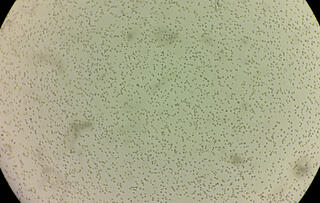Study maps genetics, traits of yeast at unprecedented scale

Better understanding of the family responsible for nearly all bread, fermented drinks, and biofuels creates a path to finding new strains with potentially useful traits.
The Science
Nearly all breads, alcoholic drinks, and biofuels made today rely on yeasts that belong to a group of fungi known as Saccharomyces. Most scientific study of the genus has focused on domesticated strains, limiting our understanding of how other strains evolved over the past 20 million years. In this study, scientists analyzed about 1,800 strains of Saccharomyces, including six wild species that had not been studied in as much detail. In the process, they created a new model for understanding biodiversity and evolution in microbial organisms.
The Impact
As global climate change affects human health and the variety of life on Earth, it is increasingly important to catalog and understand the origins of biological diversity to advance basic science while also identifying and prioritizing resources that contribute to food, medicine, fuels, and other valuable products. The most comprehensive analysis of Saccharomyces genomics to date, this research provides a framework for the discovery of new traits in wild strains of yeast that could be useful for brewing and other industries, including the production of fuels from plants. For example, strains of yeast with faster metabolisms could reduce the time required for fermentation, cutting production costs. Other strains might be better able to tolerate the higher temperatures associated with production of biofuels like ethanol or isobutanol.
Summary
Scientists with the Great Lakes Bioenergy Research Center mapped the geographies, host organisms, and substrates, or food sources, along with the evolutionary history and relationships for approximately 1,800 Saccharomyces strains, covering the complete genus with unprecedented breadth and depth. They generated and analyzed complete genome sequences of 163 strains and cataloged the observable traits of 128 phylogenetically diverse strains, or yeasts with different lineages, quantifying diversity and divergence within and between species and populations, several types of natural reticulation events, such as interbreeding or hybridization, and the influences of ecology and incomplete lineage sorting. This work elevates the genus Saccharomyces as a model for understanding biodiversity, population structure, and macroevolutionary processes in microbial eukaryotes, or organisms whose cells have a nucleus.
Contact
David Peris
Section for Genetics and Evolutionary Biology, Department of Biosciences, University of Oslo, Oslo, Norway; Department of Food Biotechnology, Institute of Agrochemistry and Food Technology (IATA), CSIC, Valencia, Spain
david.perisnavarro@iata.csic.es
Chris Todd Hittinger
Laboratory of Genetics, J. F. Crow Institute for the Study of Evolution, Wisconsin Energy Institute, Genome Center of Wisconsin, University of Wisconsin–Madison
cthittinger@wisc.edu